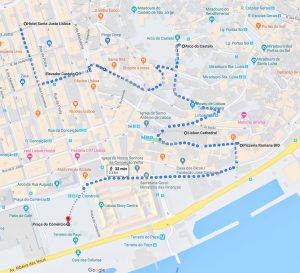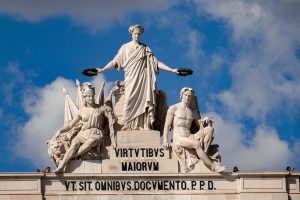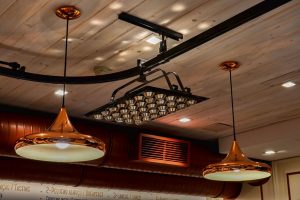TODAY’S TOURING
After 3 weeks of traveling, we are starting to slow down. It was another late start on a beautiful day. Today we followed two (2) of Rick Steves Libson walks:
- Alfama walk
- Elevador Baixi – free elevator that saved us climbing several stories.
- Elevador Castelo – free elevator that saved us climbing several more stories.
- Enjoyed the view from the Elevador Castelo viewpoint.
- Walked around the narrow streets of Castle Town around the castle.
- Visited the Church Santa Cruz do Castelo.
- Wondered down hill to the Baixi district
- For lunch we had a Pizza stop at Pizzeria Romana Bio. It included the mandatory espresso :).
- Baixi district
- Visited the Santa Maria Maior Church (Lisbon Cathedral, .
- Visited the Praça do Comércio (Commerce Square)
- Ended our walk near the hotel at Pasteis de Nata and brought some nata custard tarts back to the hotel for a snack.
Dinner was at Taberna da Baixa. We’ll miss the good food and wine at such low prices.
Elevador Baixi and Elevador Castelo (Rick Steves)
Get to the castle gate … by two free elevator rides up from the Baixa and then a short uphill walk. To find the elevators, head to Rua dos Fanqueiros and go
through the easy-to-miss door at #178 (… you’ll see faint, white lettering spelling out elevador castelo on the red rooftop — illuminated at night). Ride the elevator to the top floor and exit, angling left across the street and through the little square. Then head up Largo Chão do Loureiro, where you’ll see the second elevator (elevador castelo; handy supermarket with WC at bottom, view café and fine panoramic terrace at top). When exiting the second elevator, simply follow brown Castelo de S. Jorge signs up to the castle.
Castle Town (Rick Steves)
Just outside the castle turnstile is the tiny neighborhood within the castle walls built to give Moorish elites refuge from sieges and, later, for Portuguese nobles to live close to their king. While it’s partly taken over by cute shops and cafés, if you wander up Rua de Santa Cruz do Castelo … stroll into its back lanes, you can enjoy a peaceful bit of Portugal’s past. Most of the houses date from the Middle Ages.
Church of Santa Cruz (Mosteiro de Santa Cruz) (Rick Steves)
Enjoy this church’s grand facade. While almost invisible, wires on the statuary are electrified to keep pigeons from dumping their corrosive loads on the tender limestone. Go inside; it’s the most active religious spot in town. The musty church is lavishly decorated with 18th-century tiles that tell the
stories of the discovery of the Holy Cross (by Roman Emperor Constantine’s
mother, Saint Helena, on the left) and the life of St. Augustine (on the right;
the church is of the Augustinian order).
▲Lisbon Cathedral (Sé de Lisboa, Santa Maria Maior) (Rick Steves)
The cathedral, just a few blocks east of Praça do Comércio, is not much on the inside, but its fortress-like exterior—solid enough to survive the 1755 earthquake—is a textbook example of the stark and powerful Romanesque “fortress of God” so typical of its age. Twin, castle-like, crenellated towers solidly frame an impressive rose window.
Praça do Comércio (Commerce Square) (Lonely Planet)
With its grand 18th-century arcades, lemon-meringue facades and mosaic cobbles, the riverfront Praça do Comércio is a square to out-pomp them all. Everyone arriving by boat used to disembark here, and it still feels like the gateway to Lisbon, thronging with activity and rattling trams.
At its centre rises the dashing equestrian statue of Dom José I, hinting at the square’s royal roots as the pre-earthquake site of Palácio da Ribeira. In 1908, the square witnessed the fall of the monarchy, when anarchists assassinated Dom Carlos I and his son. The biggest crowd-puller is Verissimo da Costa’s triumphal Arco da Rua Augusta, crowned with bigwigs such as 15th-century explorer Vasco da Gama; come at dusk to see the arch glow gold.


































